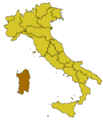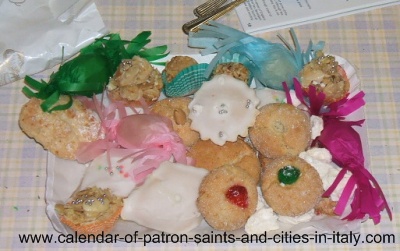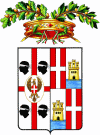
|
 Sardinia (Sardegna in Italian) is the second biggest island in the Mediterranean Sea. Being distant form the rest of Italy its history has been different, so it is its culture and traditions, less linked to the rest of the peninsula. In Sardinia too there a place included in the UNESCO World Heritage list: it is a complete village of nuraghe, a prehistoric building typical of the island, in Barumini, really unique. Being in the middle of the Mediterranean sea, it was a good landing and strategic place, so it was contended between Carthaginians, Spanish kings, Arabs, the ancient maritime republics of Genoa and Pisa and the Savoy family. Actually, several cities, like its capital Cagliari, were founded in the 8th century BC by Carthaginians sailors travelling from north Africa to Spain. Until very recently, before low cost airlines made landing there very affordable, moving to and from Sardinia was very expensive and time-consuming and Sardinian people have always been and felt themselves literally "isolated". Because of this, Sardinia is less crowded than other Italian regions, also its nature has remained wilder. Most people know Sardinia for its beautiful beaches and coasts. Indeed, I myself have been there many times to spend my holidays by the sea, but there is much more. Sardinia is the region of Saint'Ephisius, celebrated in Cagliari and surrounding comuni, as well as in the whole island. |
Map of Sardinia |
Weather in Sardinia |
| The weather in Sardinia is very hot in summer (from June to September), warm in spring and autumn while winter can be a bit chilly for only a month or two, especially along the coast and in the south, where many houses don't even have central heating. In the inner and mountain areas, winter can be very cold with snow. Sardinia is very windy, which I like so I don't feel the heat in summer, but it's also dangerous because not feeling hot you may end up spending more time in the sun! I like getting tan and can get quite dark, but Sardinia is the only place where I got bad burns on my shoulders when I was a little girl, playing all the time on the beach. So, I warmly (pun intended...) recommend you not to stay in the sun in the hottest hours, wear a hat and t-shirt or stay under your beach umbrella (ombrellone). But being the weather so nice and warm, you could go and visit Sardinia any time of the year and maybe discover its real character, a bit hidden, without many tourists around.  Chia Beach, South Coast, Island of Sardinia, Italy, Mediterranean Buy at AllPosters.com More posters of Sardinia |
What to see in Sardinia |
| Besides the beaches, there are many other beauties. Apart from some areas like Costa Smeralda (Emerald Coast, very exclusive, a lot of VIPs spend their holidays there) or around Cagliari, nature here is still quite wild, that's what I like of it. There you can enjoy a walk on the mountains (the highest peak is 1833 metres, in the Gennargentu massif), or you can visit some nature reserves or marine reserves, where you can do birdwatching, admire fink flamingos and other animals. If you go to Sardinia, I think you can't miss a visit to a nuraghe. A nuraghe is a prehistoric building (they are about 3500 years old), its shape is like a cone without the tip, built with huge blocks of stone, some can be the same height of a man. They were used as houses, there are some 7000 of them scattered all around the island, you can spot them here and there while you travel. Some are just ruins but there is a complete village of nuraghe in Barumini which is something really impressive (it is included in the UNESCO World Heritage list). You can walk around among these huge nuraghe and feel how life in prehistory could have been there. However, in the prehistory they must have been quite civilised already to build such things, because scholars still don't know how they were able to move those huge stones.  Su Nuraxi Nuraghic Complex Dating from 1500 b.C., Barumini Excavated Since 1949 Buy at AllPosters.com More posters of Barumini You can go around by car or you can catch a slow train to cross the whole island from top to bottom. Just relax and enjoy the landscape around you, you could even see a the Pisan style church, the Basilica of Saccargia, in the middle of the countryside, with is black and white stripes.  Santa Trinita di Saccargia Church, Sassari, Island of Sardinia, Italy, Mediterranean Buy at AllPosters.com More posters of Saccargia |
Sardinia food |
| Food is a always favourite conversation subject and a favourite recreational, as well as cultural, activity much appreciated, especially in Italy. Very typical here is malloreddus, a type of pasta, like gnocchi but smaller. Try them with tomato sauce and salsiccia (sausage), or just tomato sauce if you are vegetarian. Then there is a great variety of cheeses, many types of pecorino (sheep milk cheese): fresh, seasoned, smoked, with pepper and more. Many sweets are made with almonds, like these ones in the picture. I like all of them a lot, but also like a very strange type of sweet called seadas (or sebadas). It is a dessert like a big ravioli filled with cheese. It gets fried in oil and immediately served hot on your plate with bitter honey poured on it. Ask for it in restaurants, or you can buy it and do it yourself, you can't find them anywhere else in Italy.  |
Provinces |
| There are eight Provinces and 377 municipalities (comuni) in the Sardinia region, here they are, click its name to read a description of it. |
Province of Cagliari (CA - the region capital) 71 comuni are part of the Province of Cagliari. They are: |
Province of Carbonia-Iglesias (CI)23 comuni are part of the Province of Carbonia-Iglesias. They are:Buggerru - Calasetta - Carbonia - Carloforte - Domusnovas - Fluminimaggiore - Giba - Gonnesa - Iglesias - Masainas - Musei - Narcao - Nuxis - Perdaxius - Piscinas - Portoscuso – San Giovanni Suergiu - Santadi - Sant'Anna Arresi - Sant'Antioco - Tratalias - Villamassargia - Villaperuccio |
Province of Medio Campidano (VS)28 comuni are part of the Province of Medio Campidano. They are: Arbus - Barumini - Collinas - Furtei - Genuri - Gesturi - Gonnosfanadiga - Guspini - Las Plassas - Lunamatrona - Pabillonis - Pauli Arbarei - Samassi - San Gavino Monreale - Sanluri - Sardara - Segariu - Serramanna - Serrenti - Setzu - Siddi - Tuili - Turri - Ussaramanna - Villacidro - Villamar - Villanovaforru - Villanovafranca |
Province of Nuoro (NU)52 comuni are part of the Province of Nuoro. They are:Aritzo - Atzara - Austis - Belvì - Birori - Bitti - Bolotana - Borore - Bortigali - Desulo - Dorgali - Dualchi - Fonni - Gadoni - Galtellì - Gavoi - Irgoli - Lei - Loculi - Lodè - Lodine - Lula - Macomer - Mamoiada - Meana Sardo - Noragugume - Nuoro - Oliena - Ollolai - Olzai - Onani - Onifai - Oniferi - Orani - Orgosolo - Orosei - Orotelli - Ortueri - Orune - Osidda - Ottana - Ovodda - Posada - Sarule - Silanus - Sindia - Siniscola - Sorgono - Teti - Tiana - Tonara - Torpè |
Province of Ogliastra (OG)23 comuni are part of the Province of Ogliastra. They are: Arzana - Barisardo - Baunei - Cardedu - Elini - Gairo - Girasole - Ilbono - Jerzu - Lanusei - Loceri - Lotzorai - Osini - Perdasdefogu - Seui - Talana - Tertenia - Tortolì - Triei - Ulassai - Urzulei - Ussassai - Villagrande - Strisaili |
Province of Olbia-Tempio (OT)26 comuni are part of the Province of Olbia-Tempio. They are: Aggius - Aglientu - Alà Dei Sardi - Arzachena - Badesi - Berchidda - Bortigiadas - Buddusò - Budoni - Calangianus - Golfo Aranci - La Maddalena - Loiri Porto San Paolo - Luogosanto - Luras - Monti - Olbia - Oschiri - Padru - Palau - San Teodoro - Santa Teresa Gallura - Sant'Antonio di Gallura - Telti - Tempio Pausania - Trinità D'Agultu e Vignola |
Province of Oristano (OR)88 comuni are part of the Province of Oristano. They are: Abbasanta - Aidomaggiore - Albagiara - Ales - Allai - Arborea - Ardauli - Assolo - Asuni - Baradili - Baratili San Pietro - Baressa - Bauladu - Bidonì - Bonarcado - Boroneddu - Bosa - Busachi - Cabras - Cuglieri - Curcuris - Flussio - Fordongianus - Genoni - Ghilarza - Gonnoscodina - Gonnosnò - Gonnostramatza - Laconi - Magomadas - Marrubiu - Masullas - Milis - Modolo - Mogorella - Mogoro - Montresta - Morgongiori - Narbolia - Neoneli - Norbello - Nughedu Santa Vittoria - Nurachi - Nureci - Ollastra - Oristano - Palmas Arborea - Pau - Paulilatino - Pompu - Riola Sardo - Ruinas - Sagama - Samugheo - San Nicolò d'Arcidano - San Vero Milis - Santa Giusta - Santulussurgiu - Scano di Montiferro - Sedilo - Seneghe - Senis - Sennariolo - Siamaggiore - Siamanna - Siapiccia - Simala - Simaxis - Sini - Siris - Soddì - Solarussa - Sorradile - Suni - Tadasuni - Terralba - Tinnura - Tramatza - Tresnuraghes - Ulà - Tirso - Uras - Usellus - Villa Sant'Antonio - Villa Verde - Villanova - Truschedu - Villaurbana - Zeddiani - Zerfaliu |
Province of Sassari (SS)66 comuni are part of the Province of Sassari. They are: Alghero - Anela - Ardara - Banari - Benetutti - Bessude - Bonnanaro - Bono - Bonorva - Borutta - Bottidda - Bultei - Bulzi - Burgos - Cargeghe - Castelsardo - Cheremule - Chiaramonti - Codrongianos - Cossoine - Erula - Esporlatu - Florinas - Giave - Illorai - Ittireddu - Ittiri - Laerru - Mara - Martis - Monteleone - Rocca Doria - Mores - Muros - Nughedu San Nicolò - Nule - Nulvi - Olmedo - Osilo - Ossi - Ozieri - Padria - Pattada - Perfugas - Ploaghe - Porto Torres - Pozzomaggiore - Putifigari - Romana - Santa Maria Coghinas - Sassari - Sedini - Semestene - Sennori - Siligo - Sorso - Stintino - Tergu - Thiesi - Tissi - Torralba - Tula - Uri - Usini - Valledoria - Viddalba - Villanova Monteleone Buy posters of Sardinia Don't miss the opportunity to visit Sardinia at any time of the year! |
| When you contact these comuni let them know you found them on www.calendar-of-patron-saints-and-cities-in-italy.com |
Go from Sardinia and its patron saints to Catholic Saints Calendar
|
 Sardinia
Sardinia